My first visit to Streamsong Resort wasn’t for the purpose of playing golf. The trip took place in 2016 before the Black Course opened, and I was there to walk the new Gil Hanse layout and explore the design. I didn’t hit a single ball on the course (yes, it was painful not to), but I spent hours walking the holes and learning about the project. Fortunately, I returned over a year later to tee it up!
Since then, much has been written about the course and many of you have likely played it. In this review I provide my opinions on the course, but I want to hear from you in the comments section. If you’ve played Streamsong Black, what did you think? I’ll reply to the comments at the bottom of the article.
On a separate note, I wrote a review of the Red Course at Streamsong that explores the history of the resort, the guest experience, and the story of the owners. I won’t repeat that information here, but I do suggest you read that review.
Streamsong Black reminds me of courses in Australia’s Sandbelt. Particularly the sharp bunker edges, large undulating greens, and tricky green complexes feel right out of the Melbourne playbook. It’s a style that Gil Hanse uses in many of his solo designs, but the size and scale of the Black Course is unlike any other that I’ve played from the architect.
The Black Course’s greens in particular are huge with multiple tiers, plateaus, and hollows, but they seem even larger because of surrounds that are mowed at the same height as the putting surface. During my latest round at Streamsong I played with the Director of Golf who pointed out subtle painted dots on the greens that mark where the putting surface starts and the green surround ends (for the purpose of knowing when, or when not to, mark your ball). I’m not entirely sure why the surrounds are mowed at green height, but I believe the reason revolves around grass types and preventing the fairway grass from creeping onto the greens (correct me in the comments if I’m wrong!). It’s an odd feature that can lead to misconceptions about the greens and their slopes.
I’ve heard many complaints about the greens on the Black Course, but frankly, I liked them! I found the challenge to be fun and refreshing like many of those Australian courses where you have to be creative and even play away from the hole around the greens. The low surrounds force you utilize a ground game and if you try to loft wedges from everywhere, you’ll struggle dearly.
In an article I wrote for LINKS Magazine about Streamsong Black, I explained that the course feels much more rugged and exposed than its two brothers, the Blue and Red courses. Where the Blue and Red have greens snuggled into the base of dunes that foster a certain charm, the Black course sits on top of the wind-blown landscape. The Black Course substitutes intimate charm for big, bold, unapologetic features that force golfers to make decisions and often punish the lazy or thoughtless shot.
The course really beat me up in a steady strong wind on my most recent round, but I thoroughly enjoyed it. I was happy to have seen it before, and I wonder if many of the detractors wouldn’t warm to the design after a second or third round. More than anything, I like that Streamsong Black offers a different experience than the Red or Blue courses. Not only is that great for golfers, but it’s important for the health of the resort.
Hole #1 – 508 yards – The opening par 5 is a quick introduction to the big, bold nature of the Black Course. The hole sits on top of the open landscape and features a wide fairway that leads to an undulating green framed by blowout bunkers.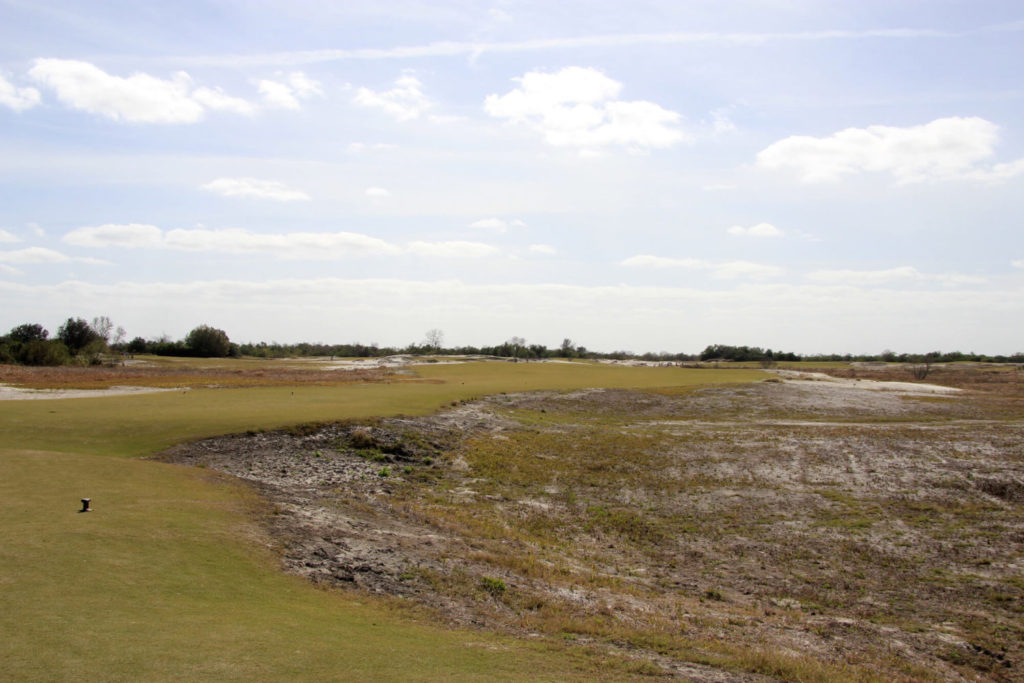

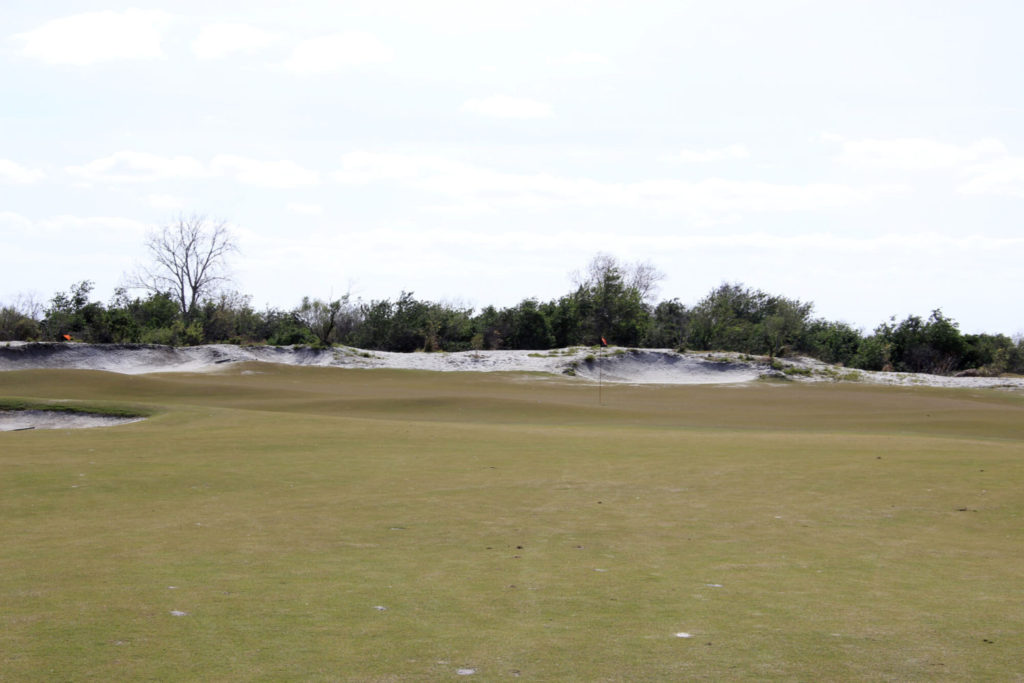
Hole #2 – 326 yards – The short second has an uphill approach to an infinity green perches atop a ridge. Distance control on the approach is key with deep bunkers in front of the green and a collection area immediately behind (see third photo below). After a big par 5 start, this hole requires finesse and strategy.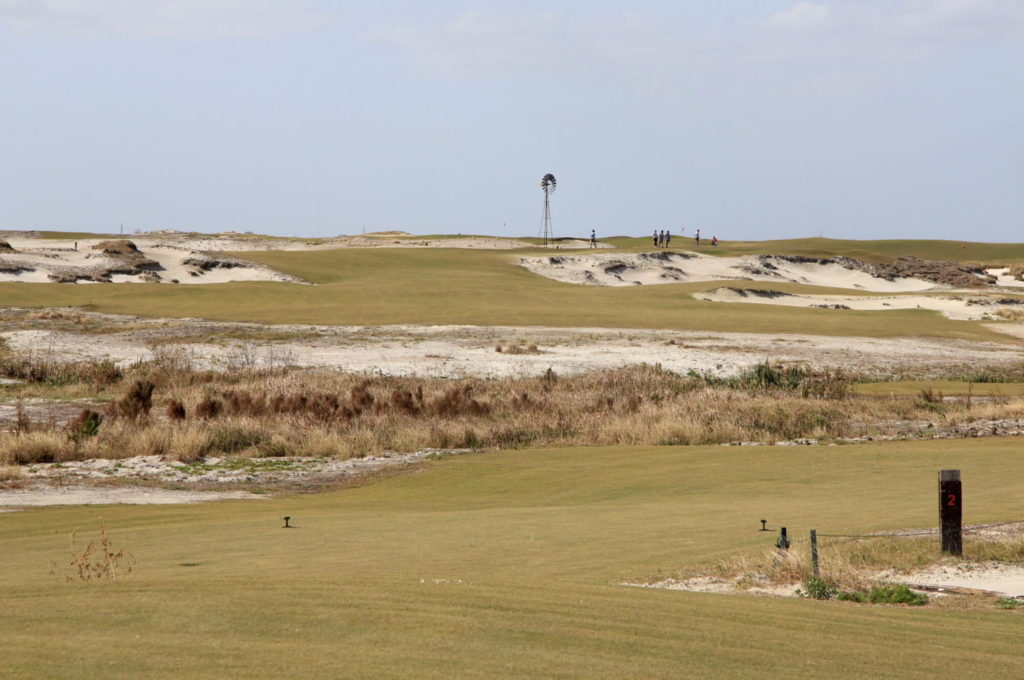
Hole #3 – 423 yards – The tee shot on the third hole is blind up and over a hill. You see the view below once you crest the hill.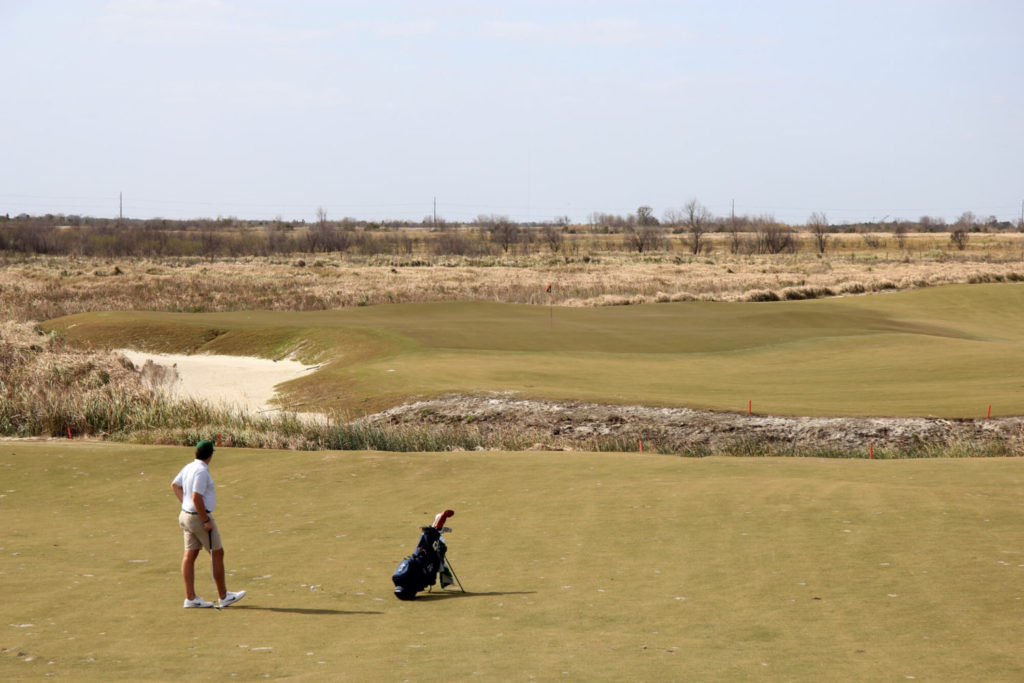
Hole #4 – 581 yards – The 4th is so large that it’s difficult to capture its scale in photos. The par 5 has a split fairway and the first photo below shows the tee shot into the lower right fairway. From the landing area in the lower fairway, golfers then play uphill to a second fairway on the left, which leads to the green.
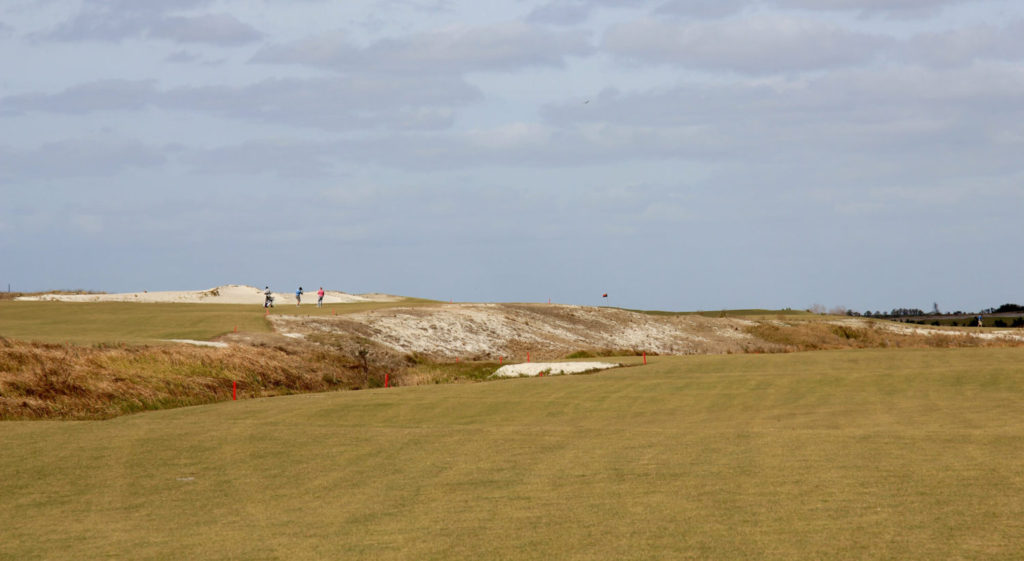
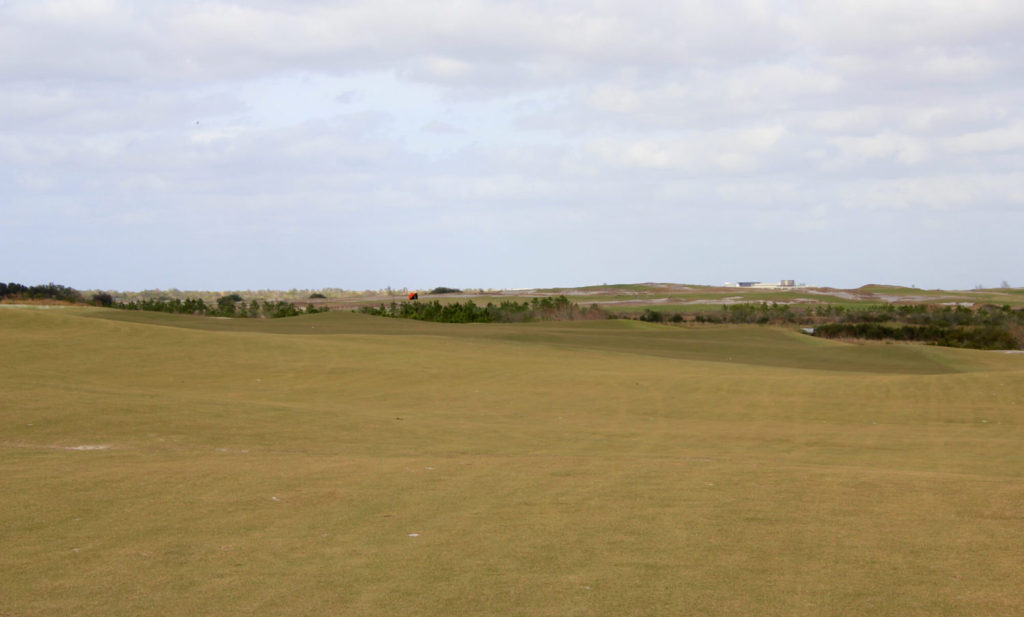
Hole #5 – 177 yards – This par 3 sticks with you long after the round. The exposed green sits on top of a massive dune and from the tee, you simply see a flagstick on the horizon line in the distance. If you miss right, your ball settles at the bottom of a 30-40 foot tall dune. You can try your darndest to miss left, but the right side of this hole with its sharp bunker edge serves as a ball magnet.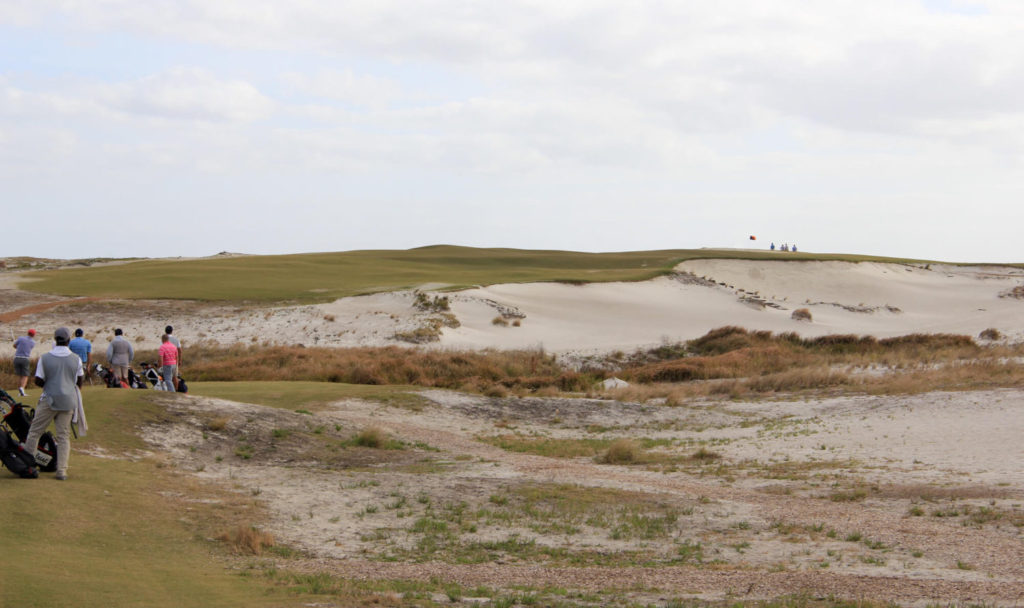
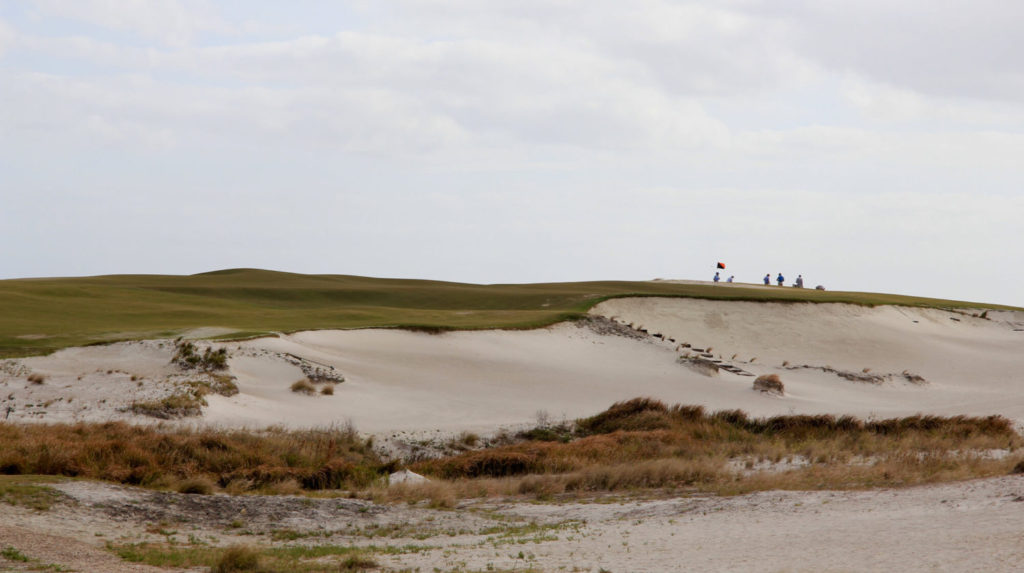
Hole #6 – 321 yards – This beautiful short par 4 is a prime example of strategy and the necessity of playing this course more than once. Although it’s not obvious in the photos below, this hole has a wide fairway with two bunkers in the dead center. From the tee it looks like there’s not much room left, but in fact, that’s the perfect place to be. If you take the apparently easier route down the right on this hole, your ball runs downhill and settles into a very difficult position below the green. Take the harder tee shot down the left and benefit from a much better approach angle!
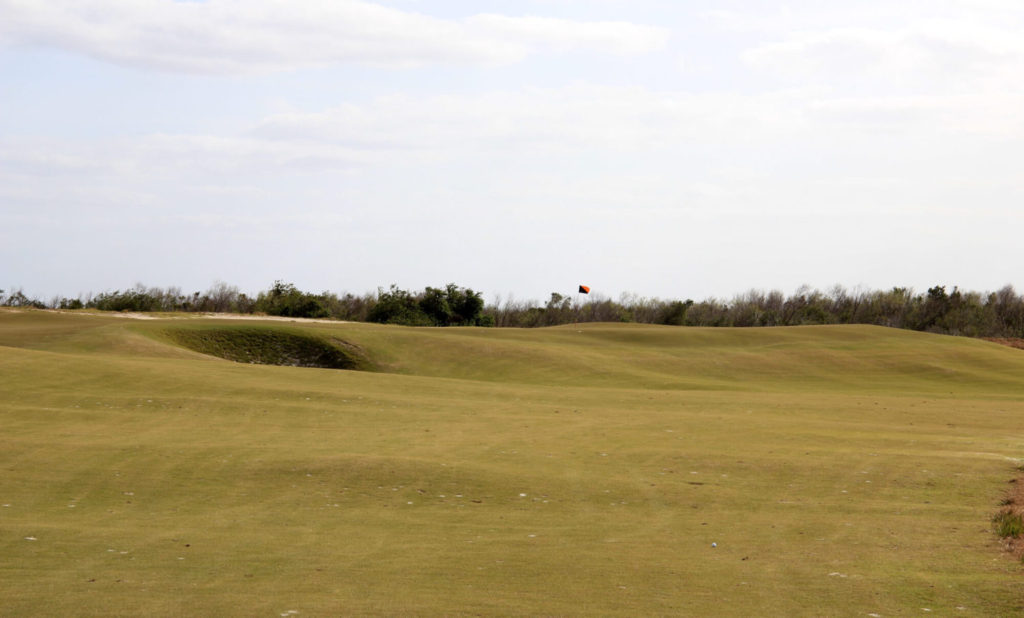
Hole #7 – 158 yards – This par 3 in particular screams Melbourne Sandbelt. The green is very wide and can play much shorter or longer than the yardage depending on the pin.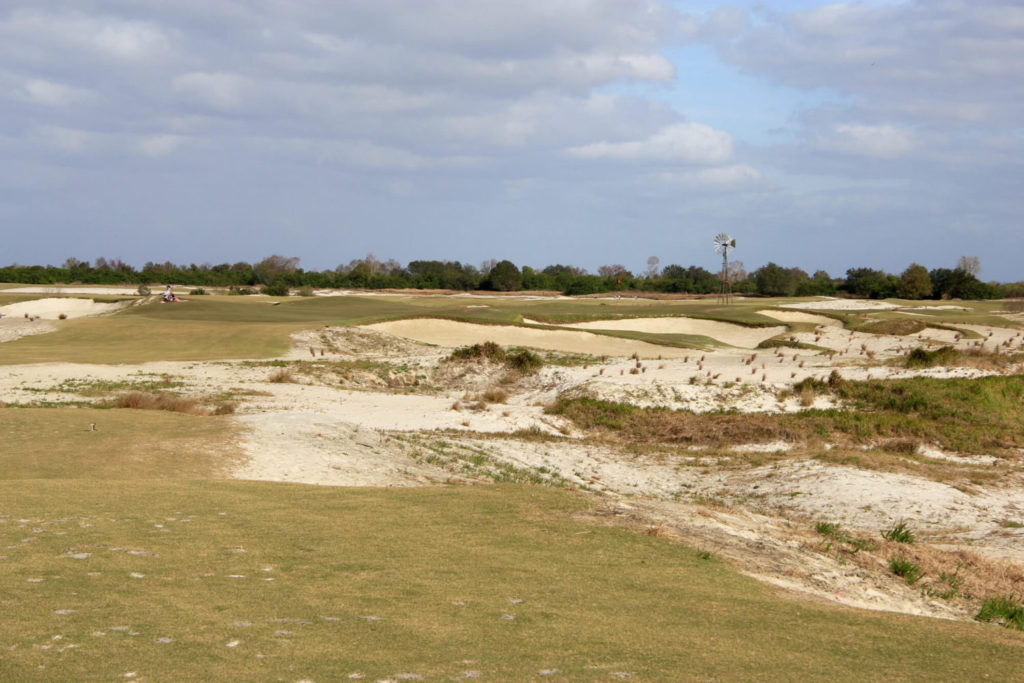
Hole #8 – 408 yards – The dogleg right 8th plays toward a group of fairway bunkers in the distance and then turns right and downhill to a huge, sloping green. In the view beyond this green you can see the Red Course in the distance.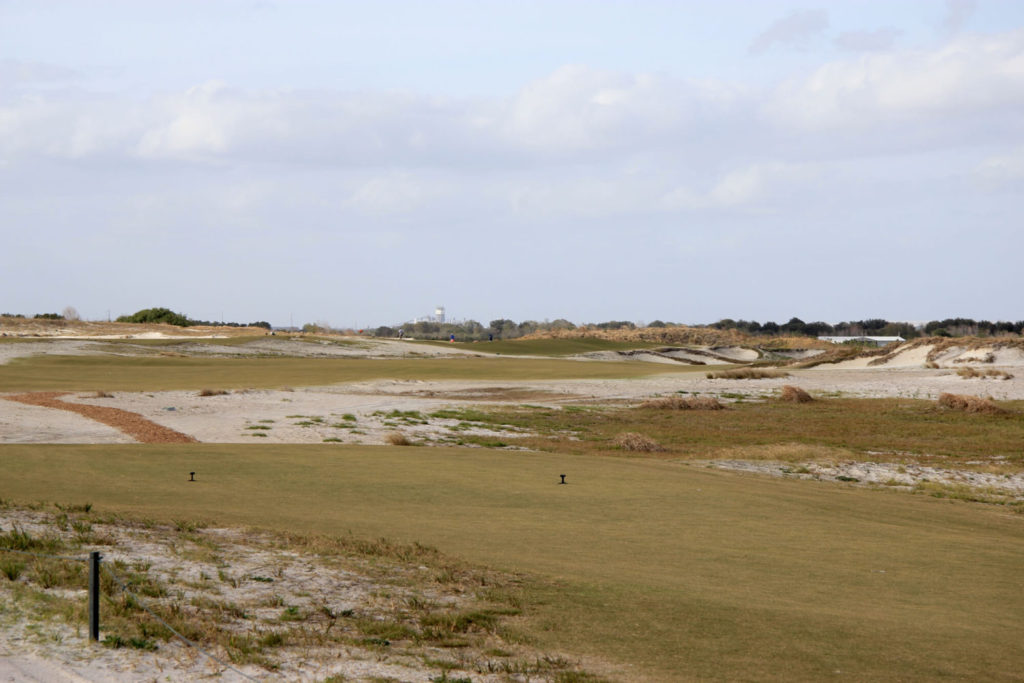

Hole #9 – 408 yards – Following a drive into this unbelievably wide fairway, players hit a blind approach shot into one of the largest Punchbowl greens I’ve ever seen. The pin position is marked on a sign at the tee, but the windmill serves as a line for approach shots (and also as the logo for the Black Course). The second photo below is taken from the side of the green and shows the size of the giant bowl.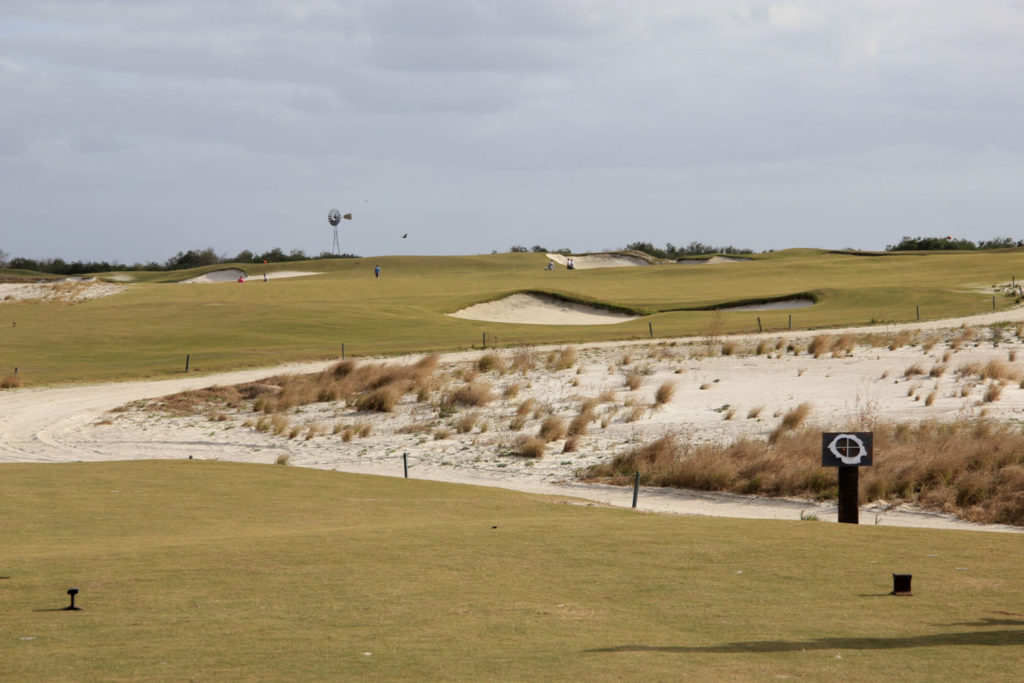
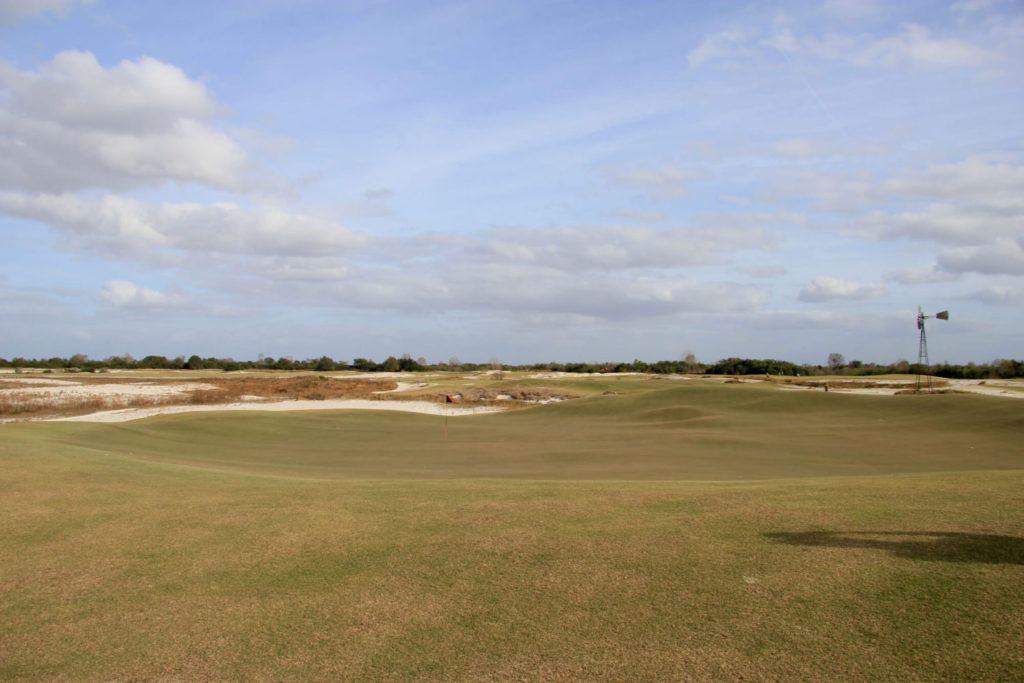
Hole #11 – 395 yards – One of the common themes in modern architecture discussions is width. The thinking is that width allows for many angles of play and therefore many options for playing a hole. The 11th is a textbook example of this thinking on width and it certainly provides many options.
In the first photo below you can barely make out the pin, which is framed against the black backdrop of the clubhouse on the left. You can also get a sense of the fairway size by looking at the golfers in the first photo. There are dozens of ways to play this hole, but the best strategies take into account the two bunkers guarding the front of the green (in the second photo below). The key is to establish an angle into this green that doesn’t force you to directly challenge/carry those tough bunkers.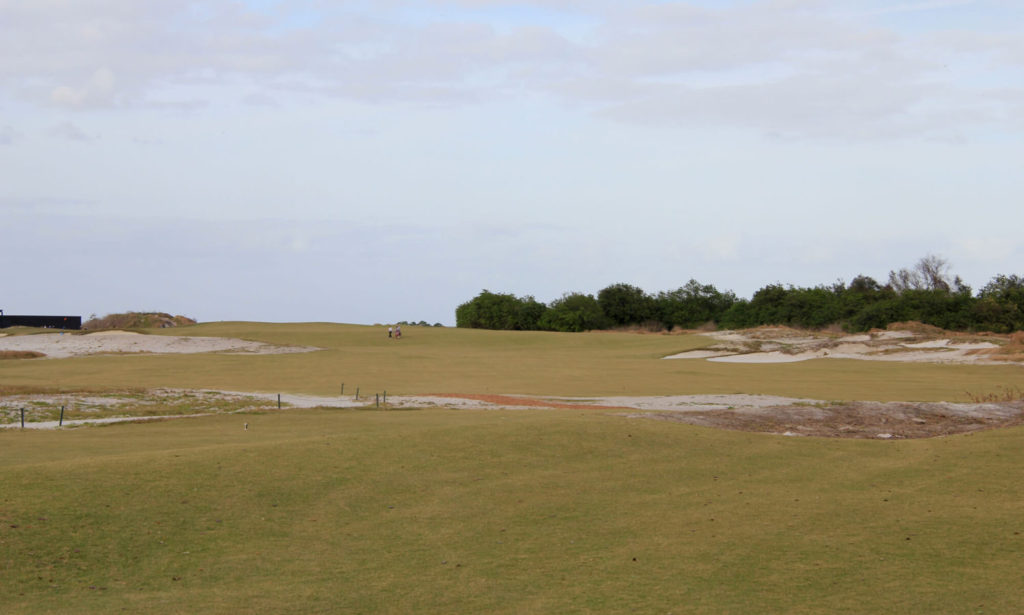

Hole #12 – 531 yards – This fairway zigs and zags around blowout bunkers before an uphill approach shot. This green, like most of the others, is enormous, and although you wouldn’t necessarily guess it, the pin you see below is on the far back right corner of the putting surface. Approach shots like these are another reason to see the course more than once.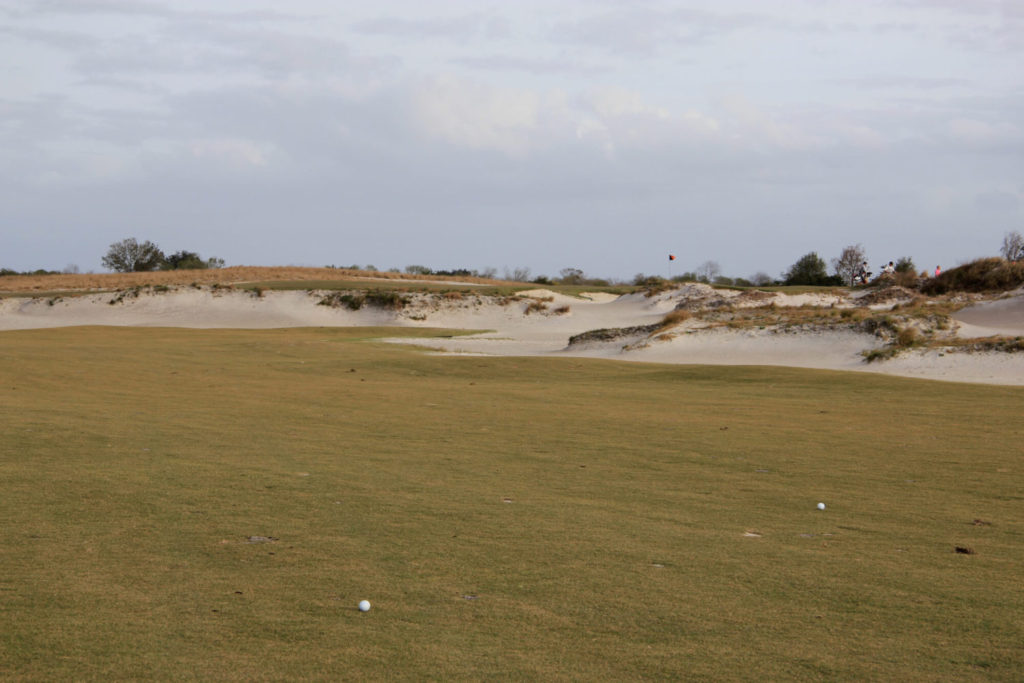
Hole #13 – 409 yards (left green) 421 yards (right green) – This hole has two greens, and in the photos below you’ll see the left option. The right green is hidden behind the grove of trees you see on the right side of the first photo below.
During my recent round the pin was on the left green. Golfers are forced to contend with a group of bunkers in the middle of the fairway and depending on the green and pin position, the strategy changes accordingly. The large left green has a bunker in front and it slopes away and right from players.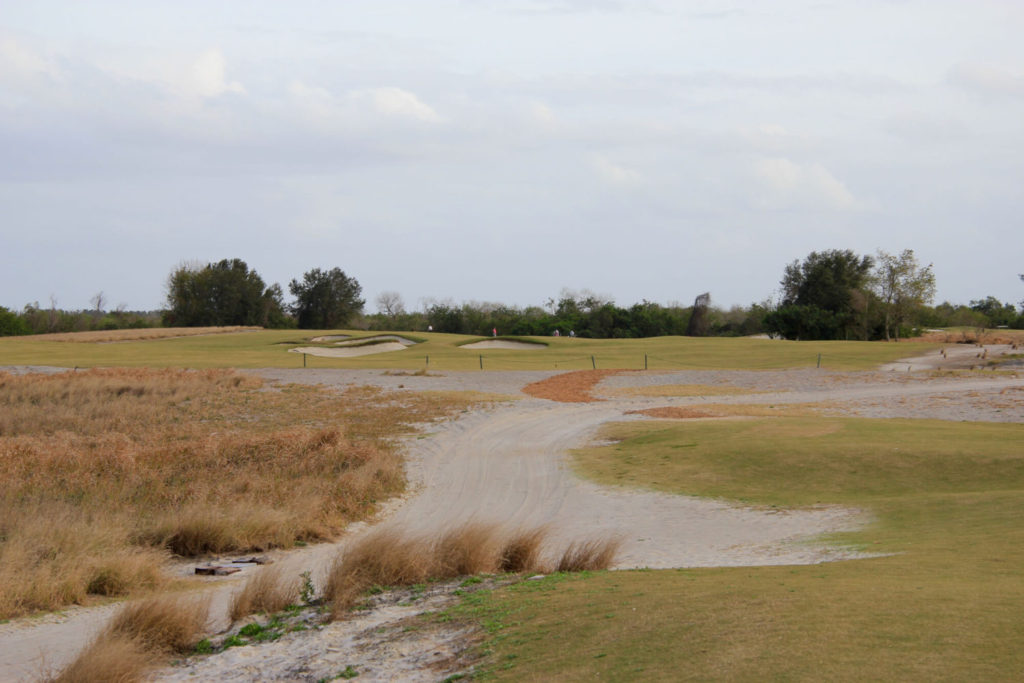
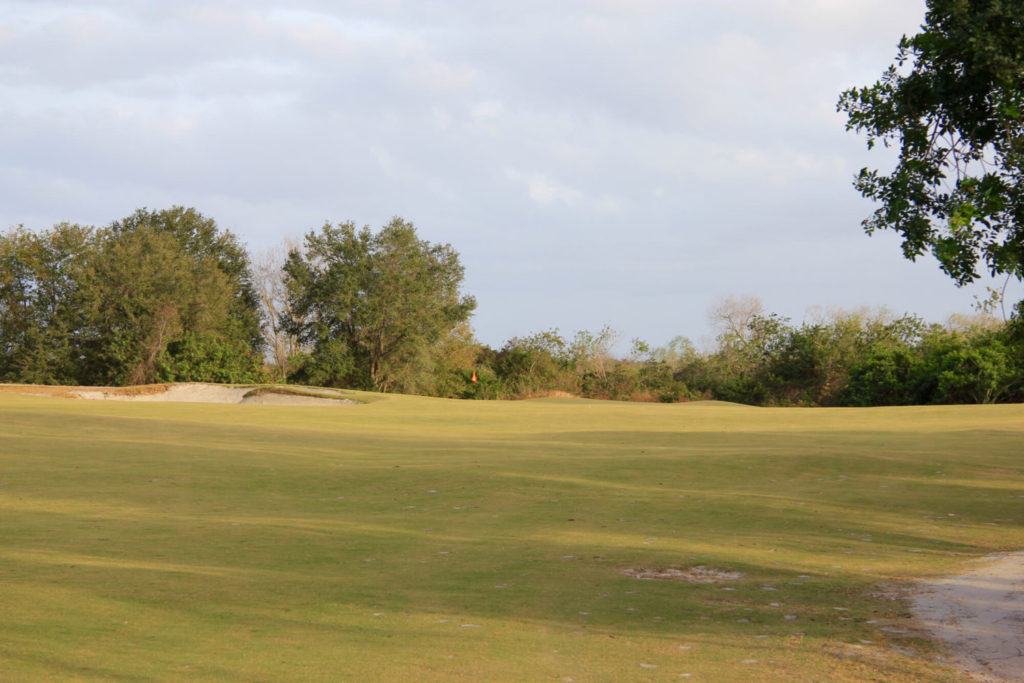
Hole #14 – 286 yards – Remember when I said undulating greens? Here’s the most sloping of all! I think it works very well on a short par 4 like this one. Long hitters can get a driver or 3-wood onto the green or surround with relative ease, but there are countless options for laying up to establish the best approach angle into the green.
The two photos below also show best the concept of mowing the green surrounds at the same height as the putting surface itself.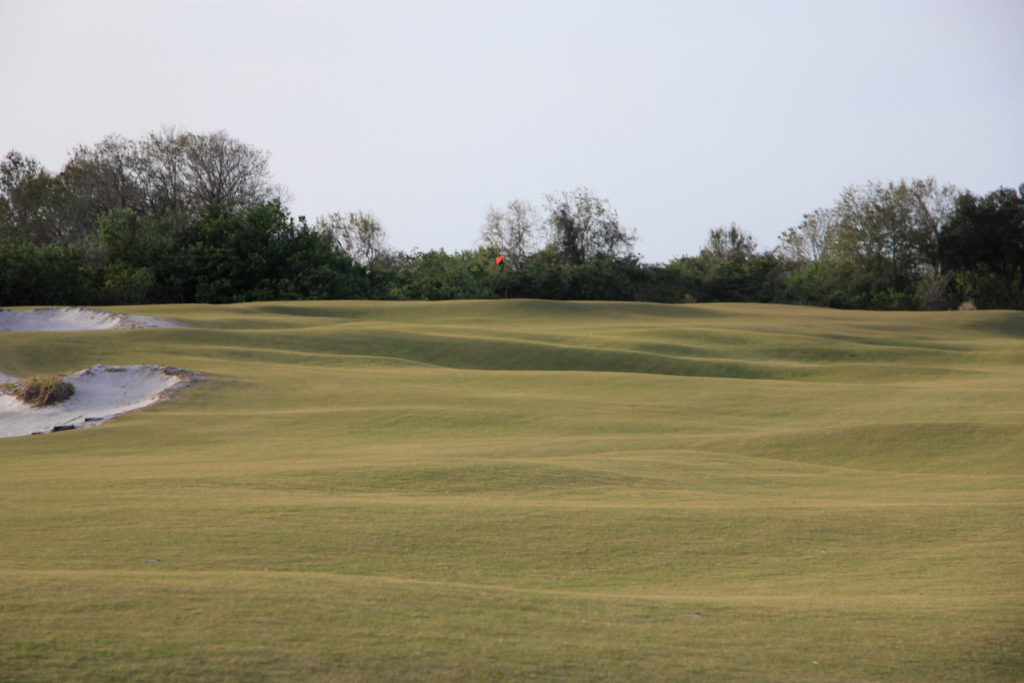
Hole #15 – 131 yards – After all of the big holes and massive features, this short par 3 is a fun change of pace. A ridge running back to front divides the wide green into two sloping halves. The back of the green is raised and feeds long shots back onto the putting surface.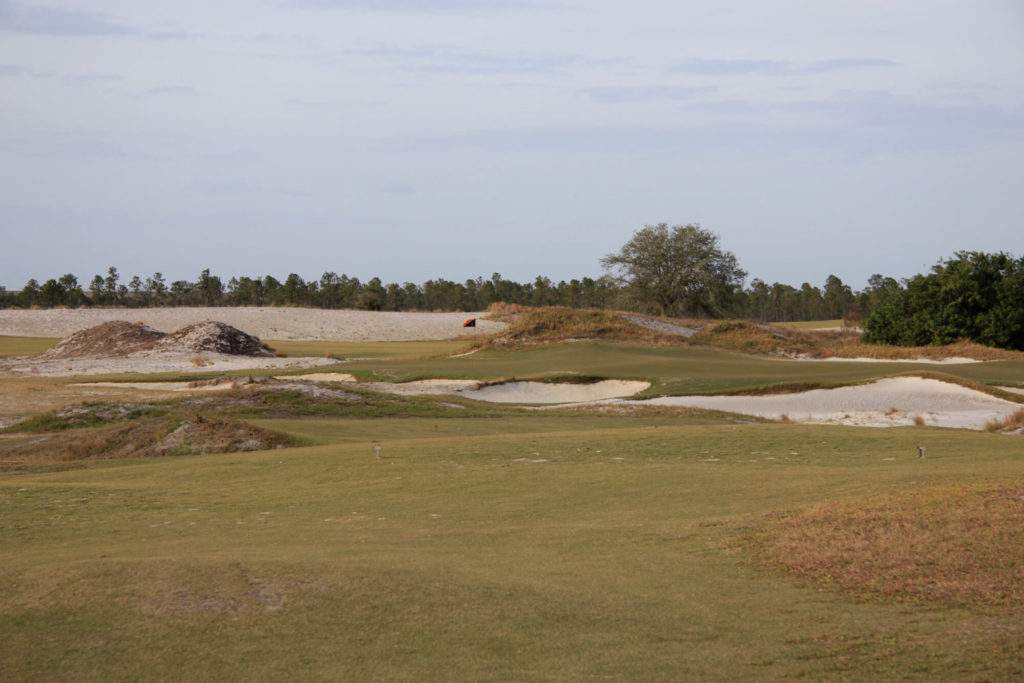
Hole #16 – 442 yards – My favorite part of the 16th is the approach. The sloping hill to the left of the green kicks and feeds balls down to the right onto the green. On a tough, long par 4 like this, I love the option to land one short and run the ball up onto to the green. Suckers may try to fly one over the bunkers to the pin (I tried and failed…), but smart players use that slope on the left.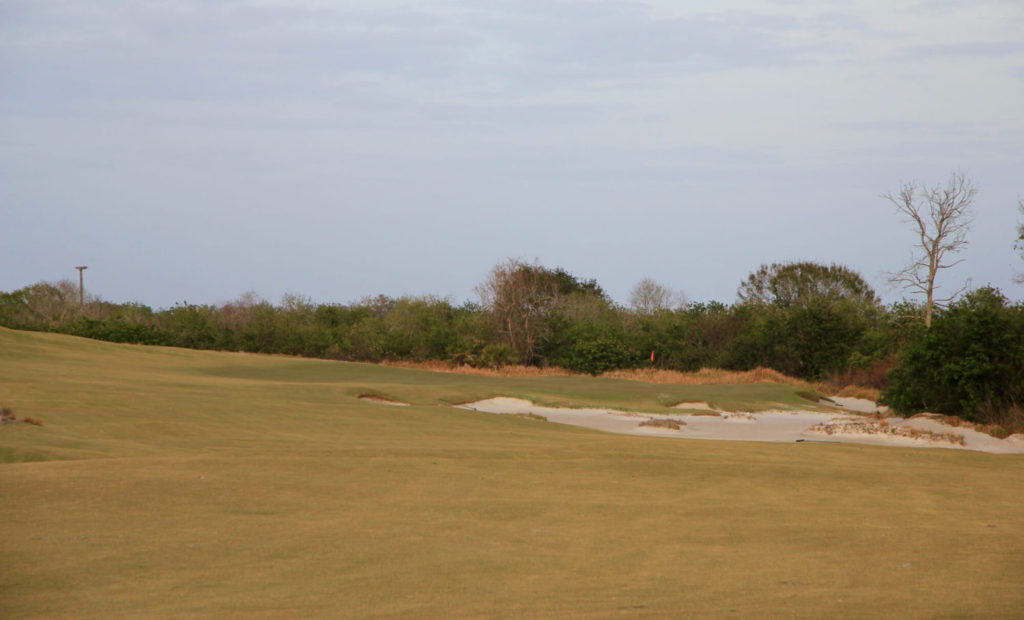
Hole #17 – 189 yards – This par 3 plays straight downhill and features a low-cut slope left of the green that serves as a kickboard. This hole is also interesting because of the pine trees planted behind the green. That is a taste of the land reclamation that I describe in my Streamsong Red Course review. Streamsong is owned by a mining company, and following the mining of the land, the company is required to do some form of land reclamation. If Mosaic hadn’t built the golf courses and resort, they would have planted the land with pine trees like you see in the photo below.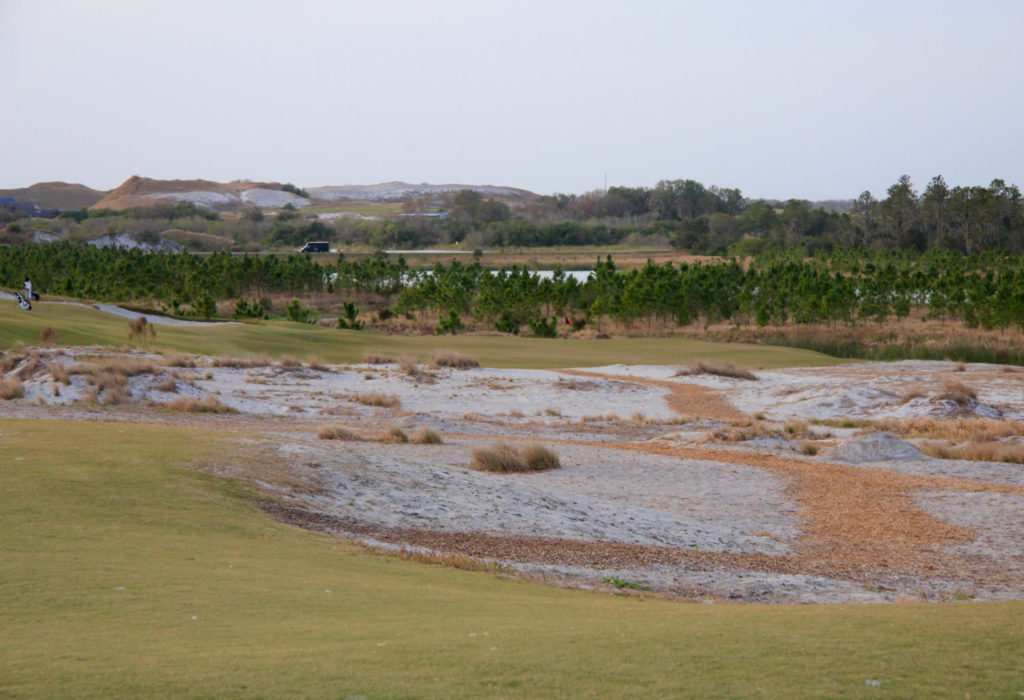
Hole #18 – 530 yards – The 18th is a stellar do-or-die finishing hole, which has grown on me since my first visit to the course. My initial thought was that the 18th didn’t fit the character of the rest of the course, but I’m not sure my reaction was correct. Players hit tee shots up and over a hill, from where the hole plays downhill to a green tucked below a dune. Those who lay up play to the left around a hazard, but the green is reachable for long hitters. The two photos below were taken at different times of day, and the second shows a different view of the green from the left rough/waste area.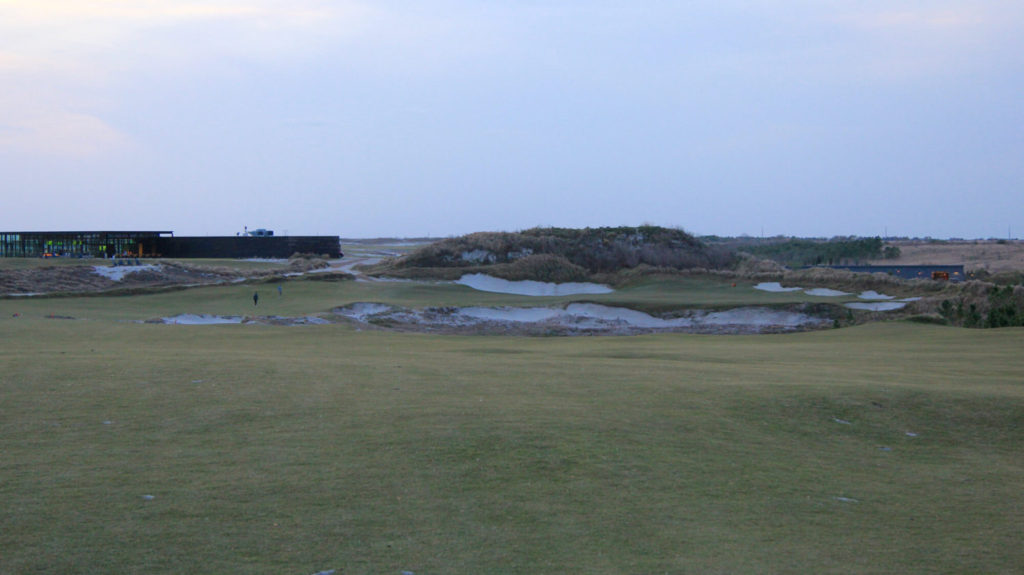
When I judge a golf course, I think back on whether the holes were memorable, whether I had different options for how to play the course, and most importantly, whether I enjoyed the round. Streamsong Resort ticked all of those boxes for me. I want to hear from you, though, in the comments below. What do you think of Streamsong Black? It’s a course that seems to split opinions, so let’s get a healthy discussion going.

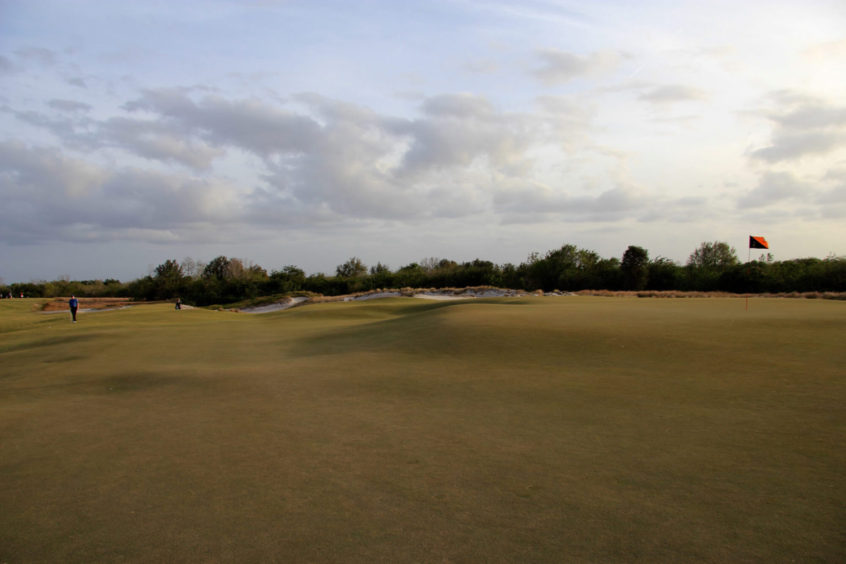
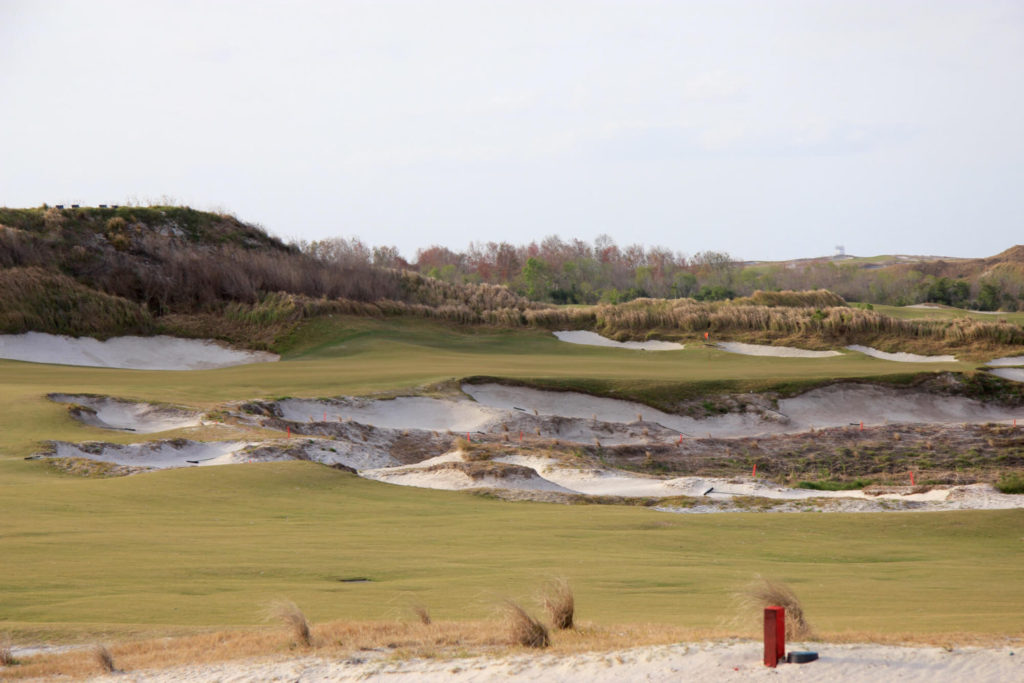
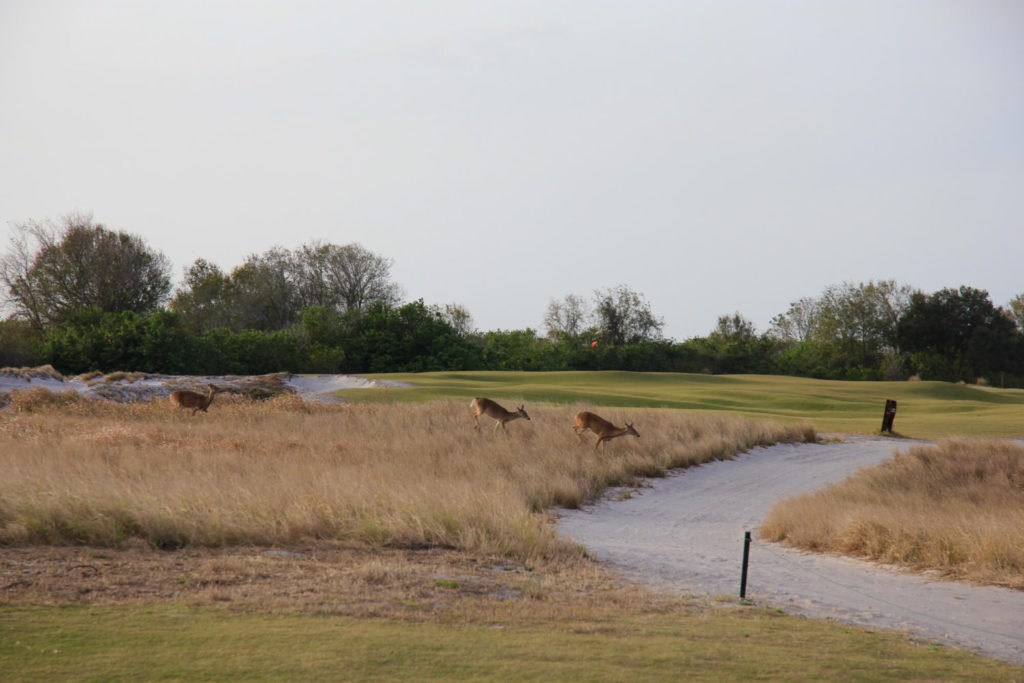

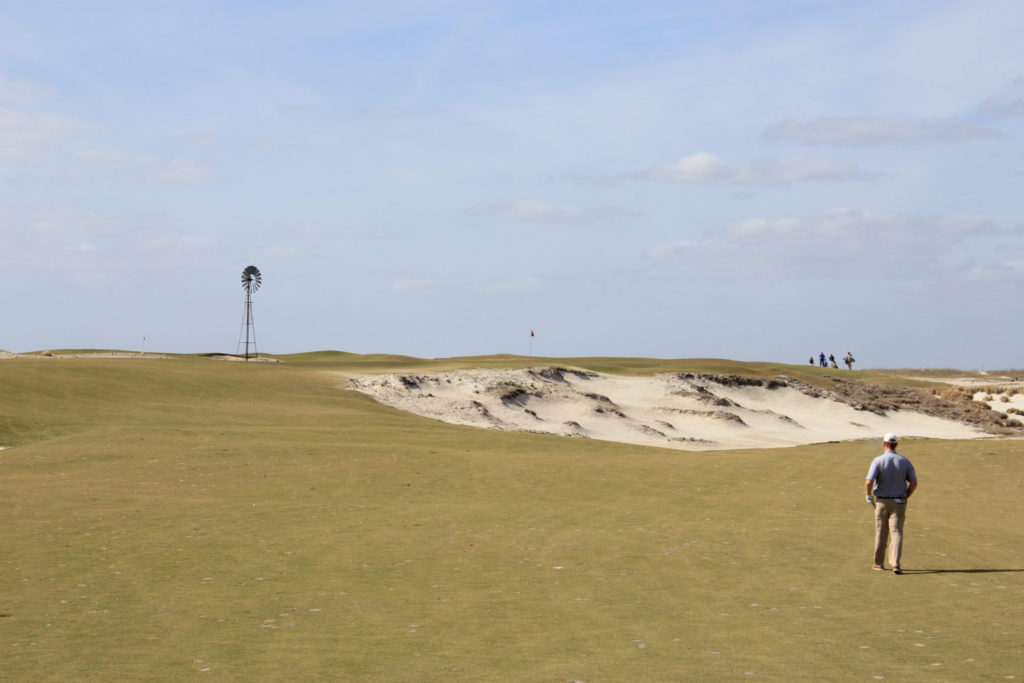
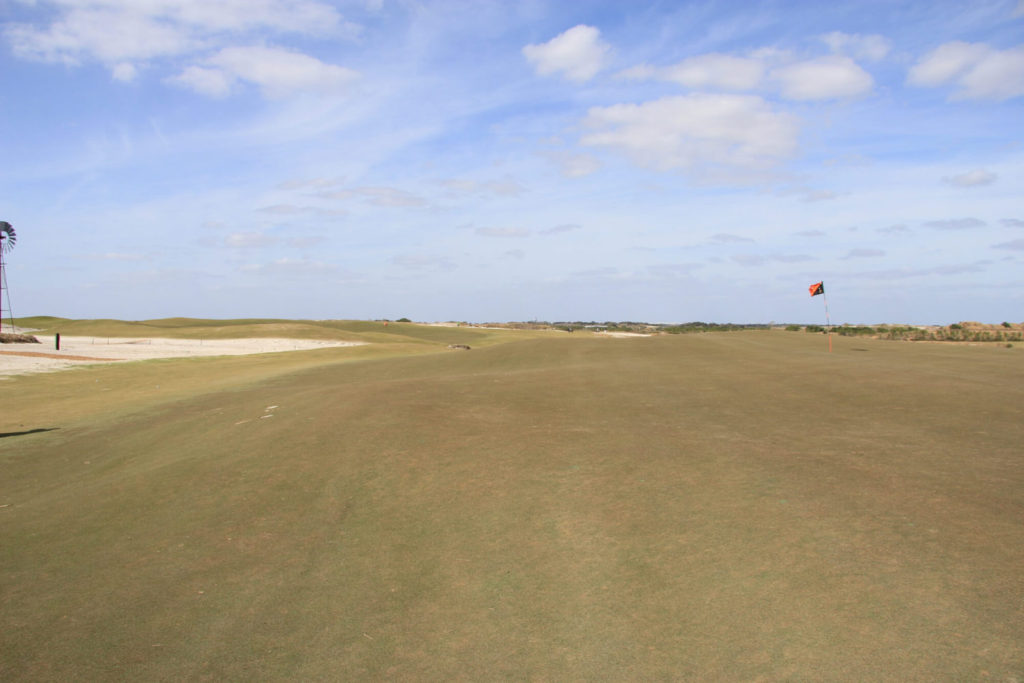
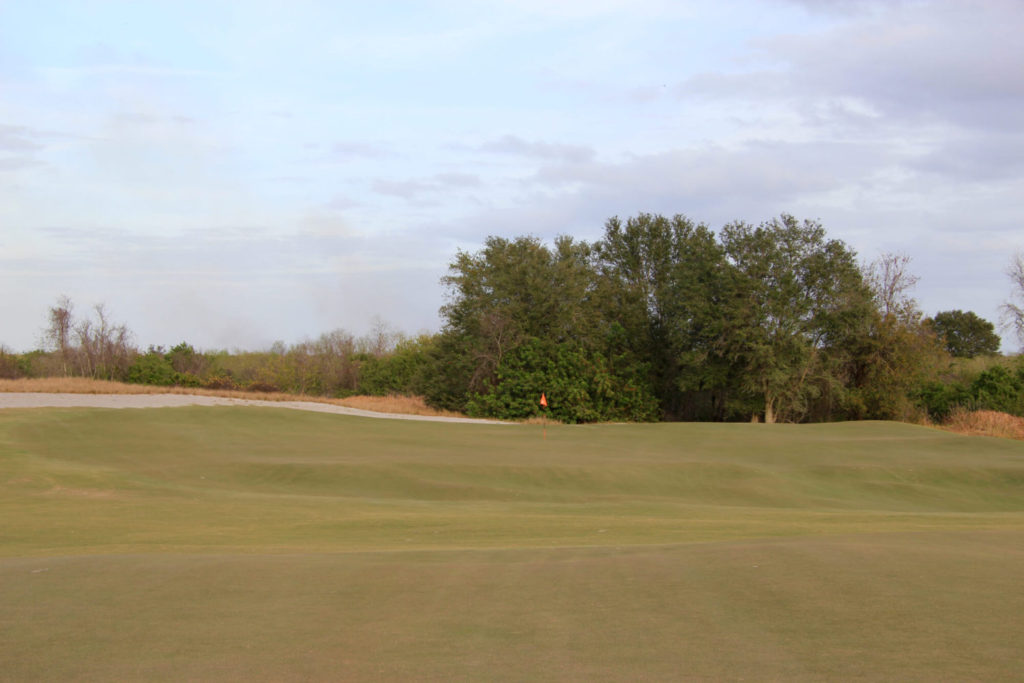
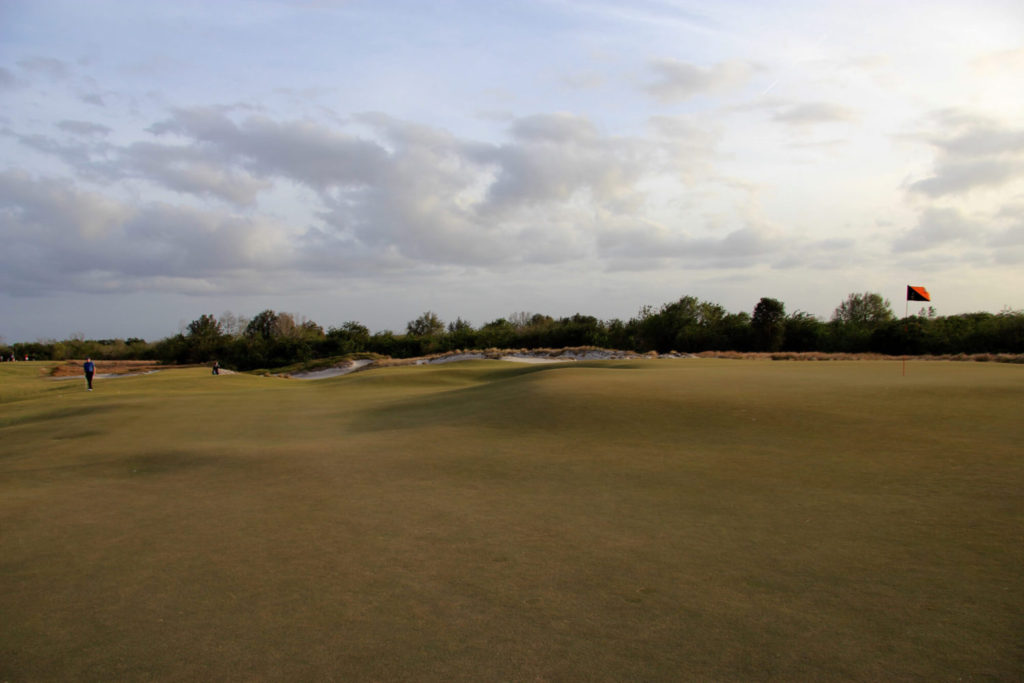
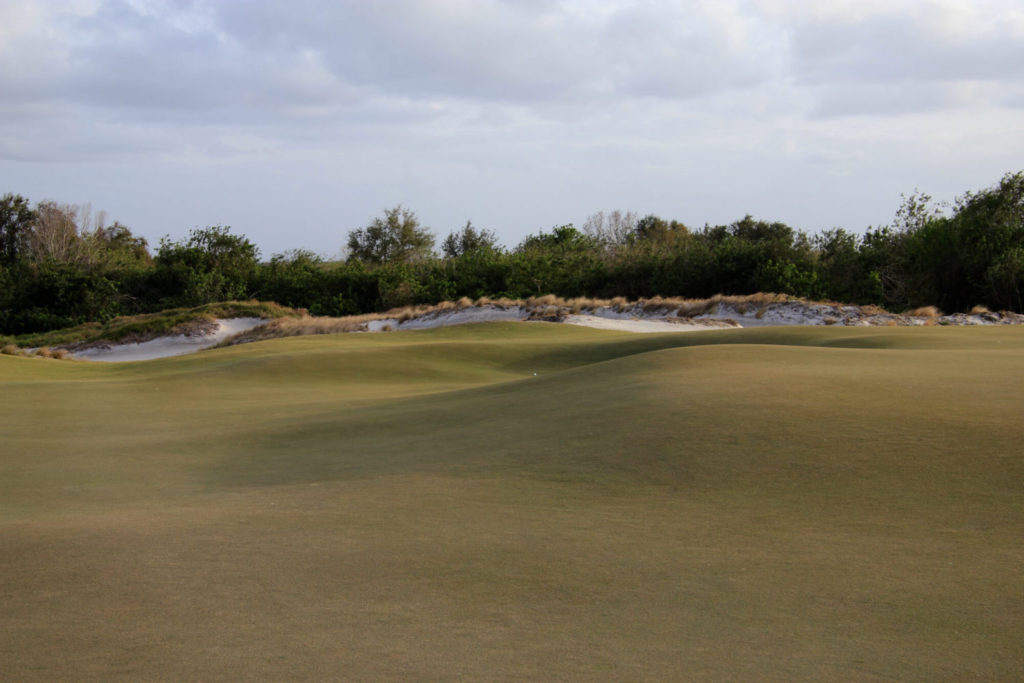

7 Comments on “Streamsong Resort Black Course Review”
Great writeup, the pictures look incredible.
I loved the Red and Blue when I played there, would love to get back to see the Black. Unfortunately our group had such *terrible* service at the Lodge the entire weekend, I doubt we’d go back. Just top to bottom, from shuttles that never showed up or took a half hour to the restaurant service. It was just surprisingly awful considering how highly rated the place is.
Yet everyone that worked on the golf side – from pro shop to starter to caddies – were an A+.
I found it to be a really odd place to be honest. I think I would go back if we could stay in the clubhouse rooms and never have to deal with getting back and forth to the Lodge. You just shouldn’t have to wait 20 minutes for a two mile shuttle ride.
Hi MCD, Thank you for the comment and interesting observations! I’m not sure if you know this, but the golf side of Streamsong and the “hotel” side of Streamsong are operated by two different companies. I don’t know enough about the structure to really comment, but it’s very interesting that you picked up on the differences in service between the two sides. Thanks for taking the time to share!
Thought the Black was the best of the lot, we played all 3 back in December last year, you need to hit every shot and plot your way round , all par 5,s were excellent, greens superb , coming from the uk means you can putt from further away, . In my opinion the best course in Florida. Similar but better than Erin hills.
Loved this review Graylin, I found Black to be my favorite of the 3. The greens were definitely tough, but if you played to the appropriate places for the pin positions, birdies were there to be made, especially on the par 5s. So glad there’s a hole-by-hole online to help relive the round (but where’s hole #10?), thank you!
Hi Brian, I’m glad you enjoyed the review! As for the 10th hole, I’m embarrassed to say that I must not have taken a photo of it. No idea why I missed it, but I can’t find photos of that darn hole anywhere in my files. I guess I’ll just have to go back!
Graylyn,
Totally agree with your comments. I’ve played the Red & Blue courses multiple times and the Black just once. Even after multiple playings there are times when I feel Red & Blue could seem to be 1 giant 36-hole golf course. And I think they’re amazing. The Black course feels entirely different which is important for the resort. Being able to install some variety helps with longer stays and added conversation. The huge surfaces maintained at putting green height do confuse some people to think the “greens” are insane, when it’s actually the surrounds that have most of the movement. A few green sites might need to be softened but overall I thought it was fun and can’t wait to play it again.
I will echo the statements about service, kind of hit or miss depending on the moment. Compared to other high end golf resorts this does need to improve but I can imagine finding high-quality service staff in the middle of nowhere can be tricky!
Hi Jack, I’m glad that you agree with my take on the Black Course! And that’s a great point about the Red and Blue feeling similar – almost like a 36-hole course. I think over the next decade the Black will emerge as one of the favorites at the resort. It just needs a little time to settle in and have people get used to those greens. I definitely want to get back and play it again!